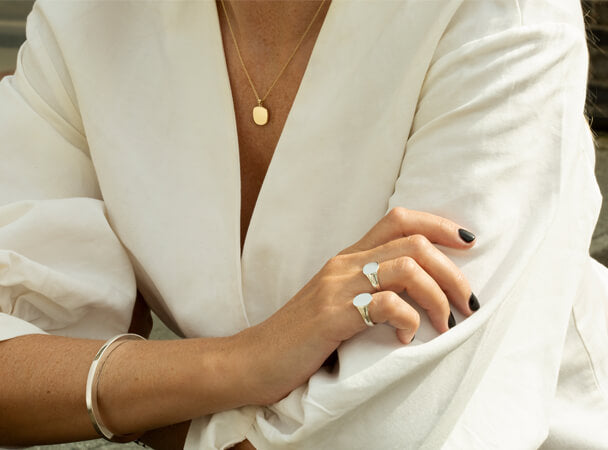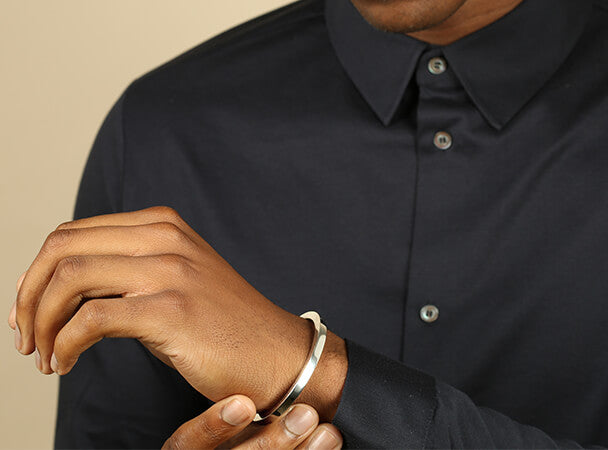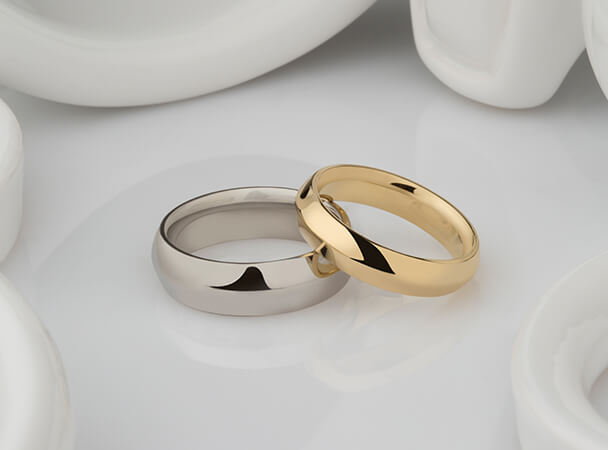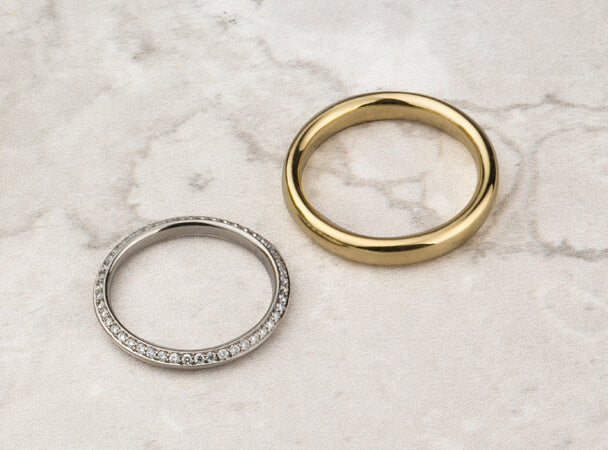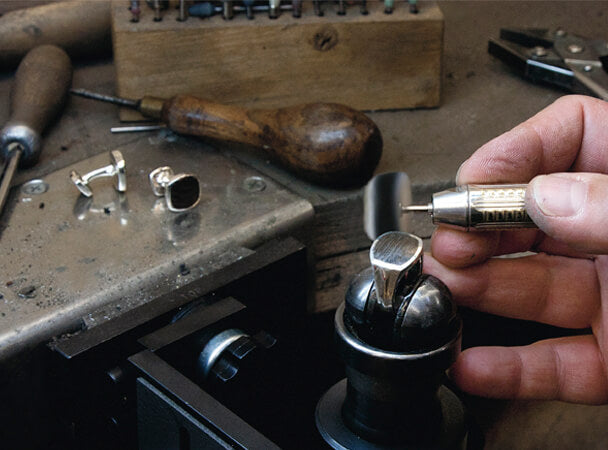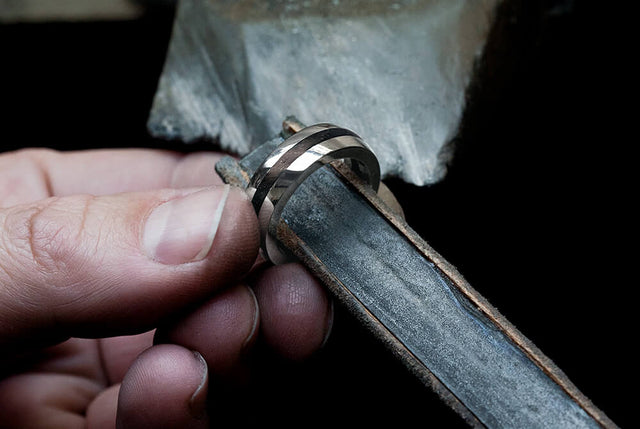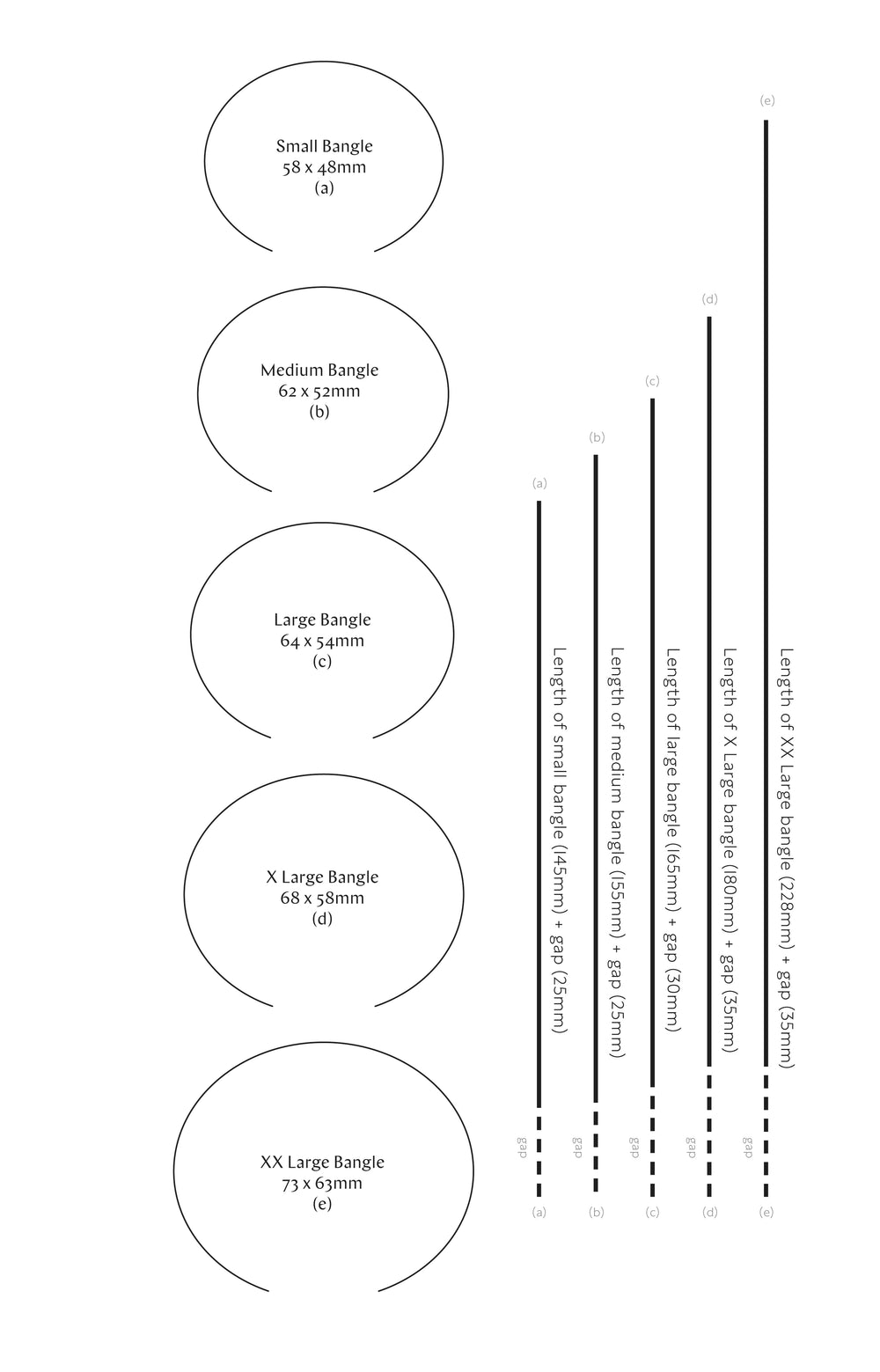Because we appreciate the subtle colour of pure precious metals we choose not to plate our fine jewellery and all of our precious jewellery is fully assayed and hallmarked.
The differences between metals of different types and purity is not just the colour difference - which can be quite subtle - but also differences of weight, density and hardness.
Metal hardness and density
Because pure Gold and Silver are relatively soft in their pure states various other pure metals are added to the gold and silver to increase its durability and strength - which is what the carat (or karat) mark indicates. This is the same for all Silver and Gold not just ours.
We use Silver that is marked 925 which means that it is 92.5% pure silver with the other metals making up the balance.
For our 9ct we use Gold that is marked 375 which means that it is 37.5% pure gold with the other metals making up the balance.
For our 14ct we use Gold that is marked 585 which means that it is 58.5% pure gold with the other metals making up the balance.
For our Palladium we use Palladium that is marked 950 which means that it is 95% pure Palladium with the other metals making up the balance.
For our 18ct we use Gold that is marked 750 which means that it is 75% pure gold with the other metals making up the balance.
For our Platinum we use Platinum that is marked 950 which means that it is 95% pure Platinum with the other metals making up the balance.
The hardness of the metals is a bit more complicated.
Starting with the White metals, Platinum, White Gold and Silver: Platinum is the Mike Tyson, hard as they come. After which 18ct White Gold is then the hardest followed by Palladium, 14ct White Gold and lastly 9ct White Gold which is slightly harder than Silver.
Yellow Gold: 14ct Yellow Gold is harder than 9ct and 18ct Yellow Gold, which are both as soft as each other.
Rose Gold: 18ct is the hardest followed by 14ct which is harder than 9ct Rose Gold.
